This latest installment of “Historic Tax Credits @ Work” features a successful project to transform an underutilized train station into a community asset.
About the Station
The Connellsville Union Passenger Station (1993RE00395), at 900 West Crawford Avenue in Connellsville, Fayette County, was built between 1911 and 1912 and designed by architects J.C. Grooms and Charles Yon for the clients Western Maryland Railway Company and Pittsburgh & Lake Erie Railroad (P and LE).
The location of the transportation building was situated between the coal and coke south region of Connellsville and Pittsburgh’s striving iron and steel regions. The rail extension traveled south of Pittsburgh through McKeesport and Youghiogheny Railroad Company and continued 43 miles to Connellsville. By the early twentieth century the Baltimore and Ohio, Pittsburgh and Lake Erie, and the Pennsylvania Railroad made Connellsville a railroad center with the addition of shops and roundhouses.
In 1911-1912 they partnered with Western Maryland on a terminal junction agreement with P and LE to form the union station at Connellsville. This new station would replace the small station two blocks east that served both freight and passenger travel. In lieu of this transition, the existing viaduct or elevated track had to be extended from the north end of town to the south end.
Once the tracks and station were completed, P and LE operated trains to the west and the Western Maryland operated the trains to the east. The new depot was estimated in 1911 to cost $35,000 with an additional $35,000 spent on platforms and overhead work. The 3- story tower feature of the depot served as a teletype and control room for the interlinking switches of both lines.
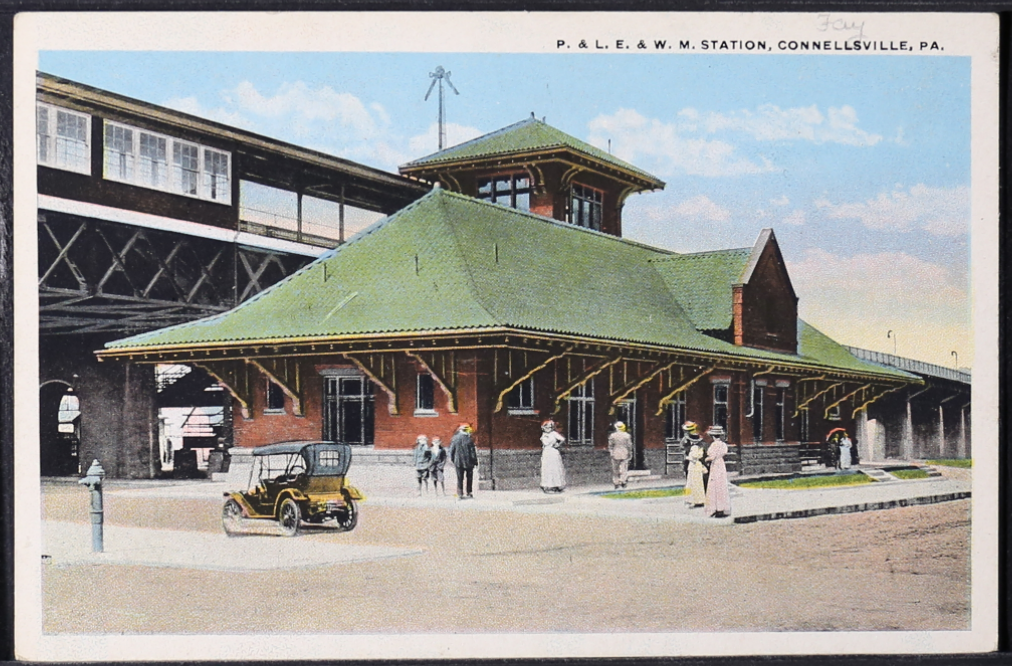
Undated postcard showing the Connellsville Union Station. From the postcard collection of the PA State Archives.
An important service for the P and LE railroad was the passenger traffic, which by the late 1880s equaled a million passengers a year. Many would travel to the amusement park Aliquippa Park for a day of relaxation, but a large percentage were part of the commuter traffic that averaged from 19 to 21 miles of travel.
During 1910 to 1930, the passenger service was at its highest point making the railroad one of the busiest in the eastern United States with more than 60 passenger trains per day going through the Pittsburgh depot. The Western Maryland connection at Connellsville was established for passenger service between Pittsburgh and Baltimore in November of 1912 and reached a peak revenue in 1920 of $3,343,099.
Unfortunately, in 1930 the overall passenger number decreased due to the Great Depression and by early 1939 the railroad decided to discontinue their passenger service on the Youghiogheny Division between Connellsville and McKeesport due to lack of profit.
The railroad station became empty after 1939 until Glessner Motors moved into the building for office use. Between 1955 to 1995 the station was used as a dealership, auto parts store, and owned by Youghiogheny Opalescent Glass.
Before Rehabilitation
In 2017, the Somerset Trust Company, decided to rehabilitate the historic railroad property. The station had been listed in the National Register of Historic Places on March 29, 1996, for significance under Criteria A and C, for events associated with transportation and Architecture.
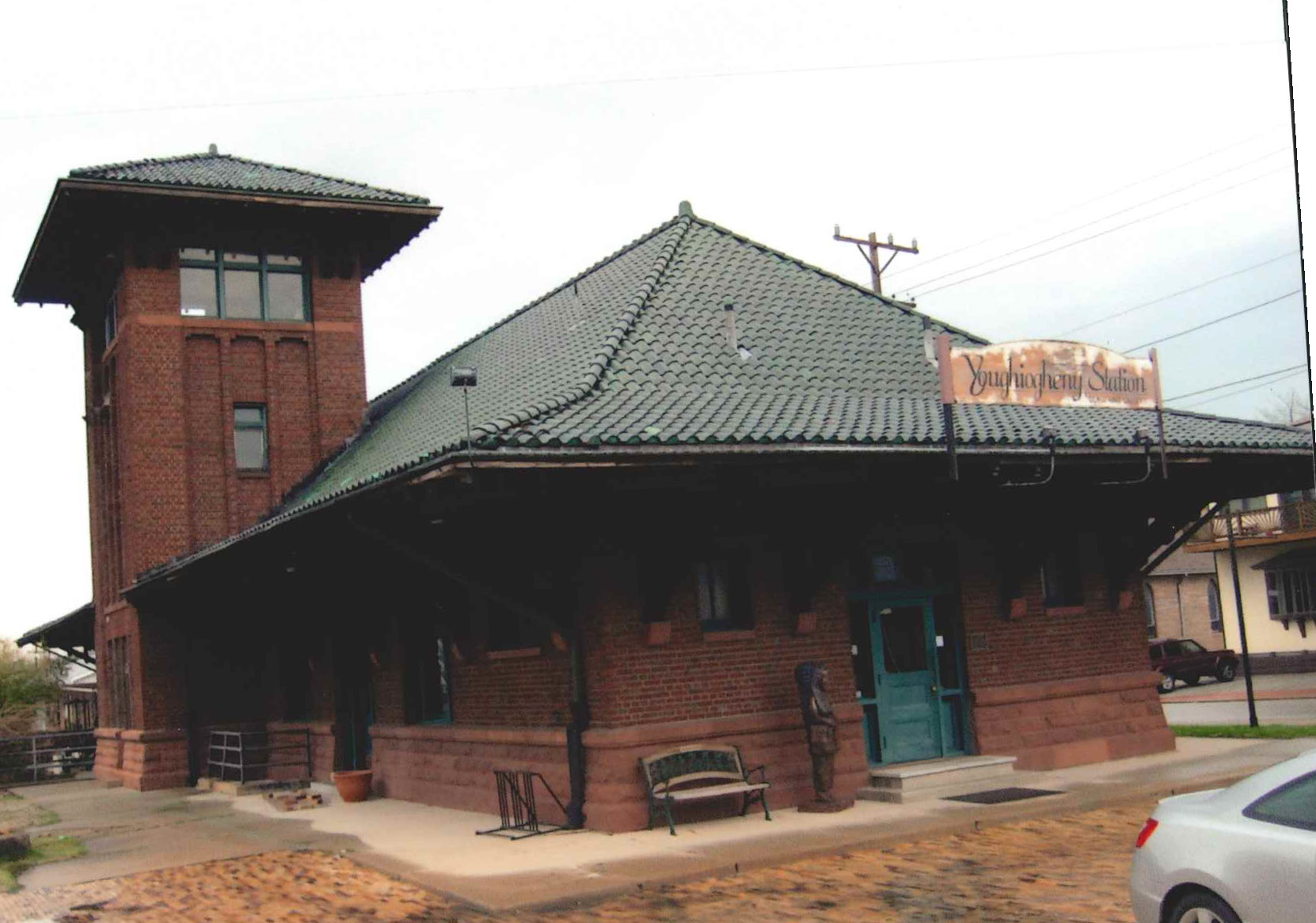
West and north elevations of station with tower.
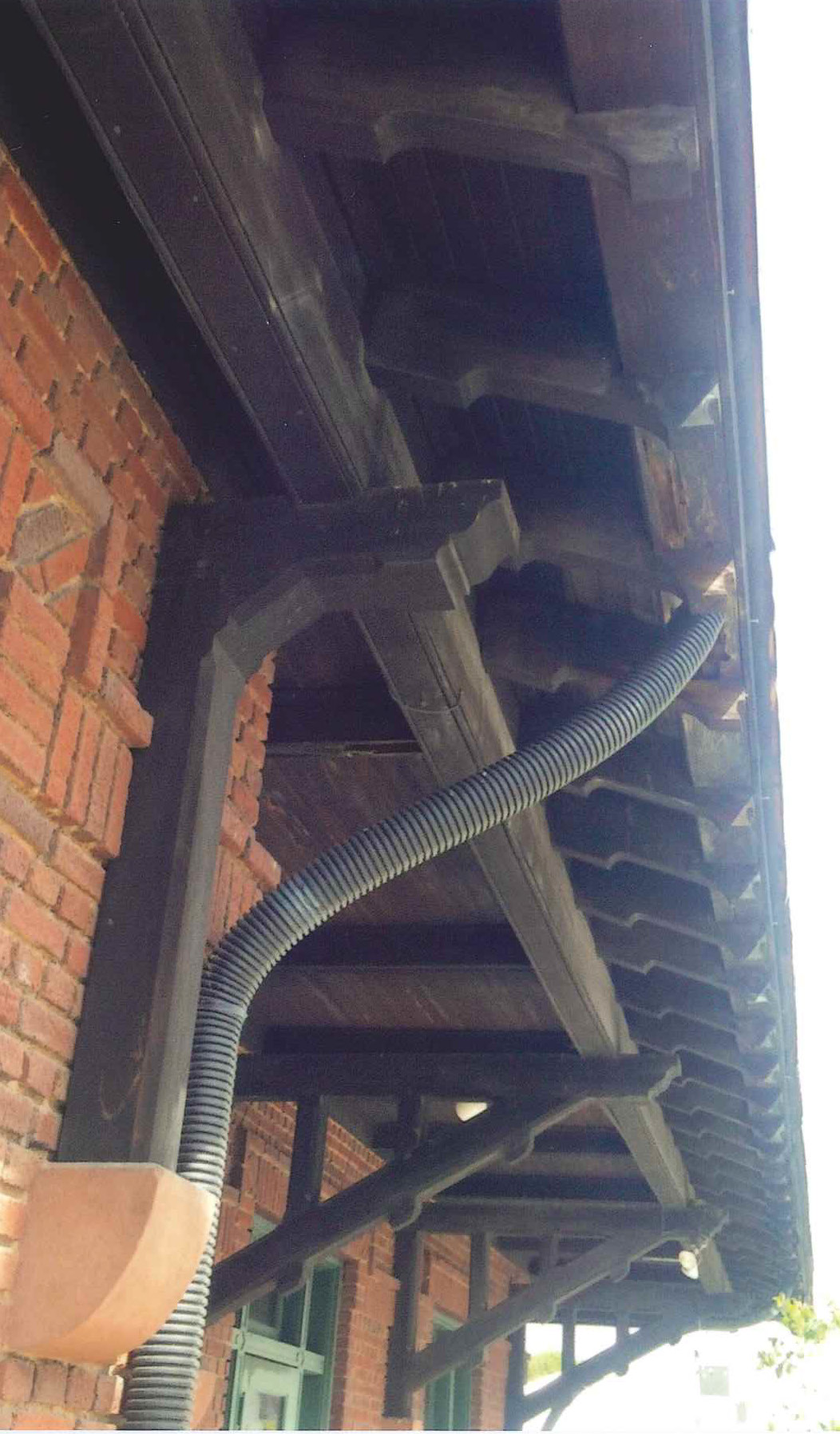
Roof overhang with wood soffit, brackets, and rafter ends showing temp. downspout.
Because the station was individually listed, the project was a great candidate for the Federal and State Historic Rehabilitation Tax Credit programs. Both were used as a vital component in the overall financing package.
- Looking north into passageway and toward Smoking Room and Baggage Room.
- Smoking Room and Passage, looking south toward General Waiting Room 1st floor.
- Former Ticket Office and ticket window.
- Smoking Room and Passage, looking south toward General Waiting Room 1st floor.
Rehabilitation
Between 2017-2022, the Somerset Trust Company got underway with a $1.9 million rehabilitation project of the Connellsville Union Passenger Station.
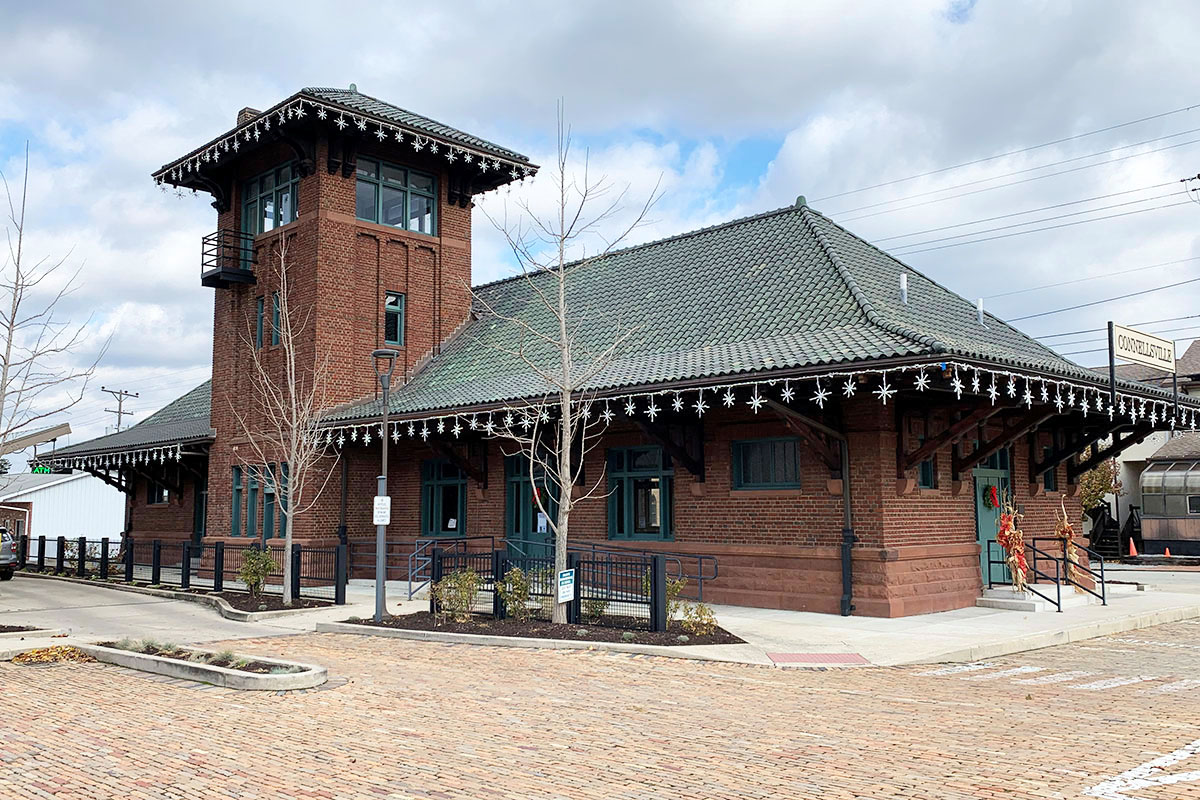
West façade of building from parking lot, showing repaired and repainted doors and windows.
Exterior work included:
- general landscaping work,
- construction of new ADA ramp,
- repointing of masonry,
- repainting of existing parged surface,
- retention and in-kind repair of windows,
- installation of new doors that match original design,
- in-kind repair of the existing porch canopy and lighting,
- installation of new pipe railing at former tower balcony, and
- replacement and in-kind repair of existing roof components.
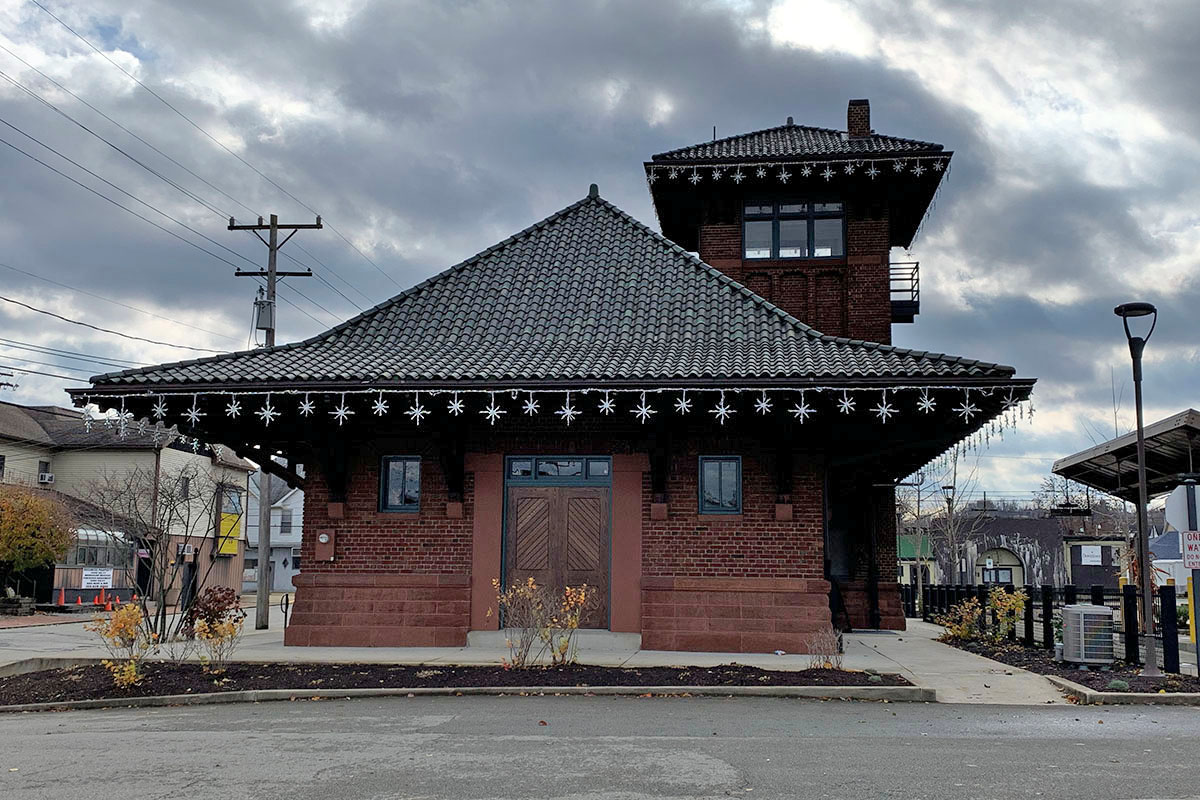
North elevation of station, showing new baggage room doors (now fixed in place, replacing a non‐historic wider doorway and non‐historic door) constructed to duplicate the original design.
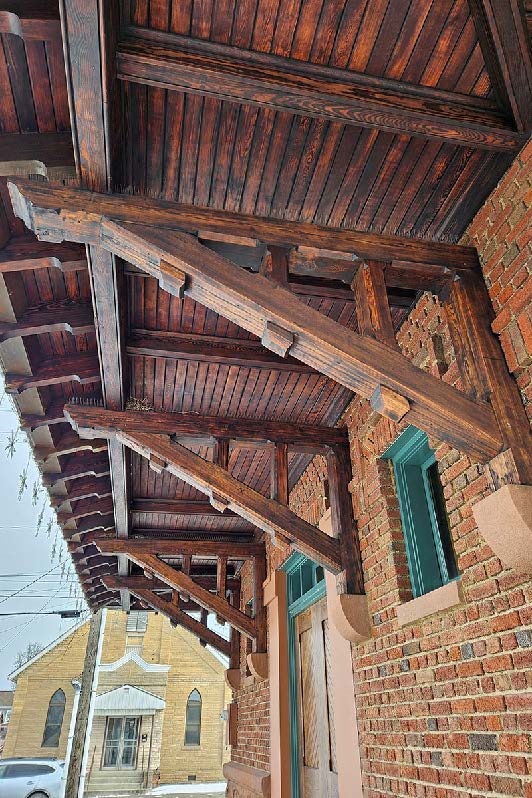
Wood soffit, brackets, and rafter end around the entire first floor and tower required extensive repairs which were done in accordance with original design and details.
Interior work included:
- retention of many original spaces and features like lobby, office, and stair,
- reconstruction and construction of partition walls,
- installation of new finishes and doors, and
- restoration and in-kind repair of finishes and materials such as the tile and marble flooring, plaster walls and ceilings, and wood trim.
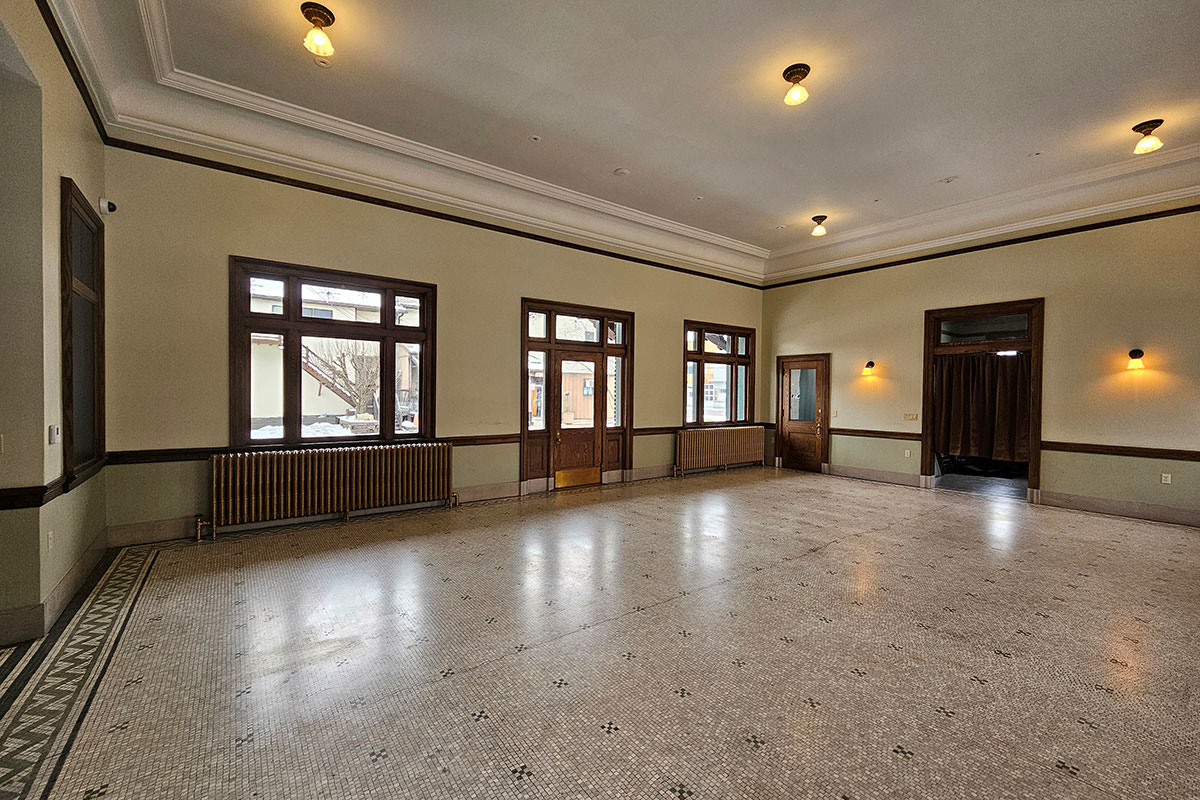
General Waiting Room.
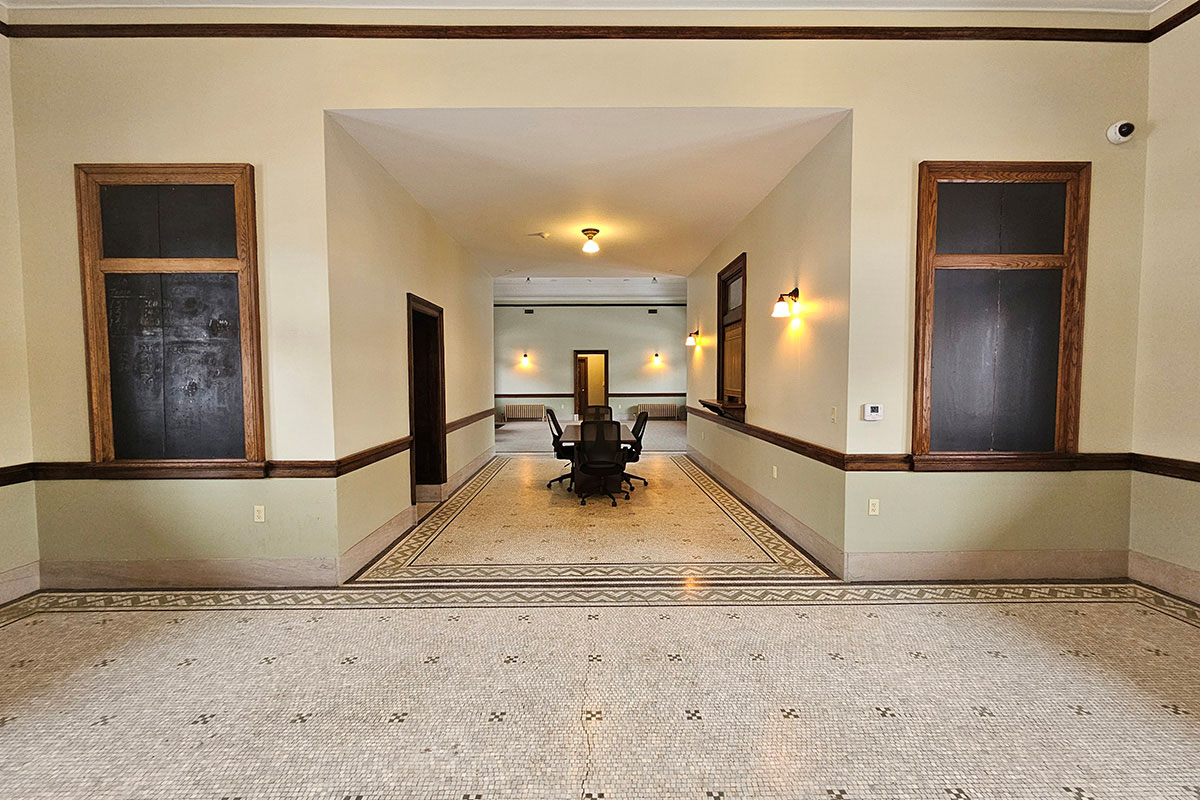
General Waiting Room. Looking into passageway and toward Smoking Room and Baggage Room.
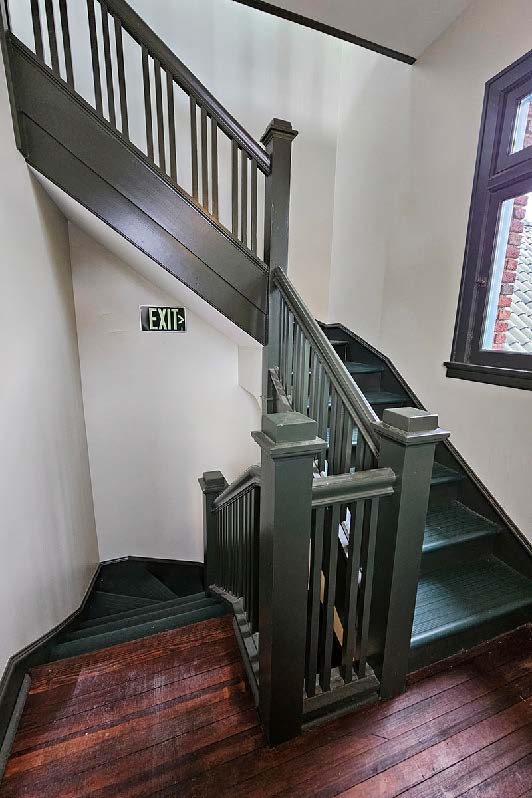
Second floor (tower) landing, showing stairs to first and third floors.
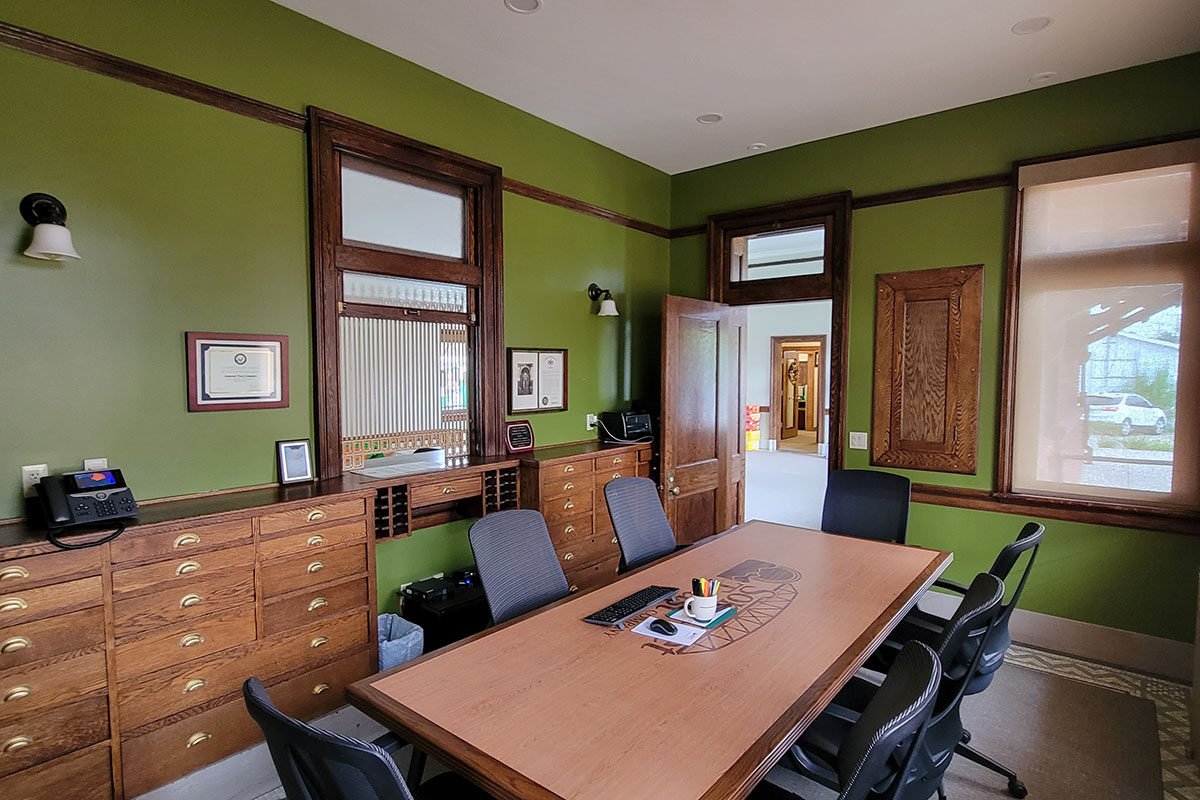
The former ticket office is now a conference room.
The project received NPS Part 3 approval on August 16, 2024, as the completed work met the Secretary of the Interior’s Standards for Rehabilitation. The project also received a $125,000 PA Historic Preservation Tax Credit allocation from DCED for State FY 2020.
After Rehabilitation
The historic Connellsville Union Passenger Station now is being used as office and meeting space to support the growing expansion of the Somerset Trust Company a local financial organization.
This prominent building is now once again a beacon that reminds the visitors and residents in Connellsville of its great history. The Federal and State historic tax credit programs are great incentives for owners to revive their historic buildings into a new chapter that will have beneficial effects on everyone.
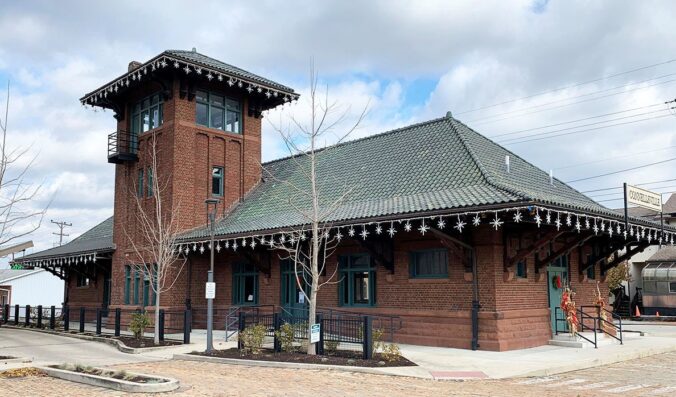
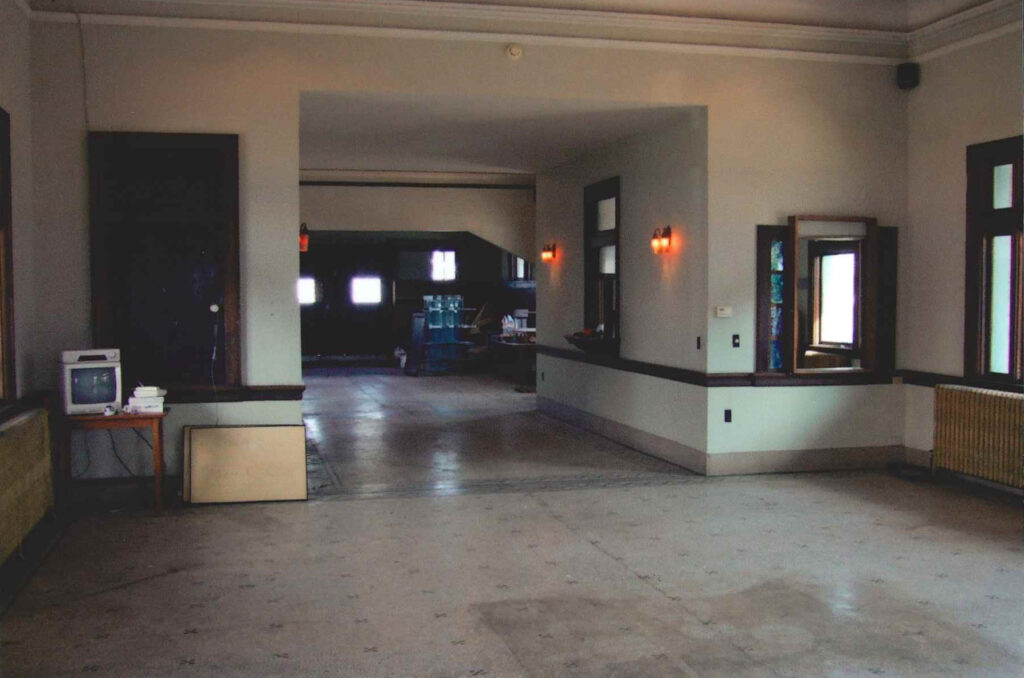
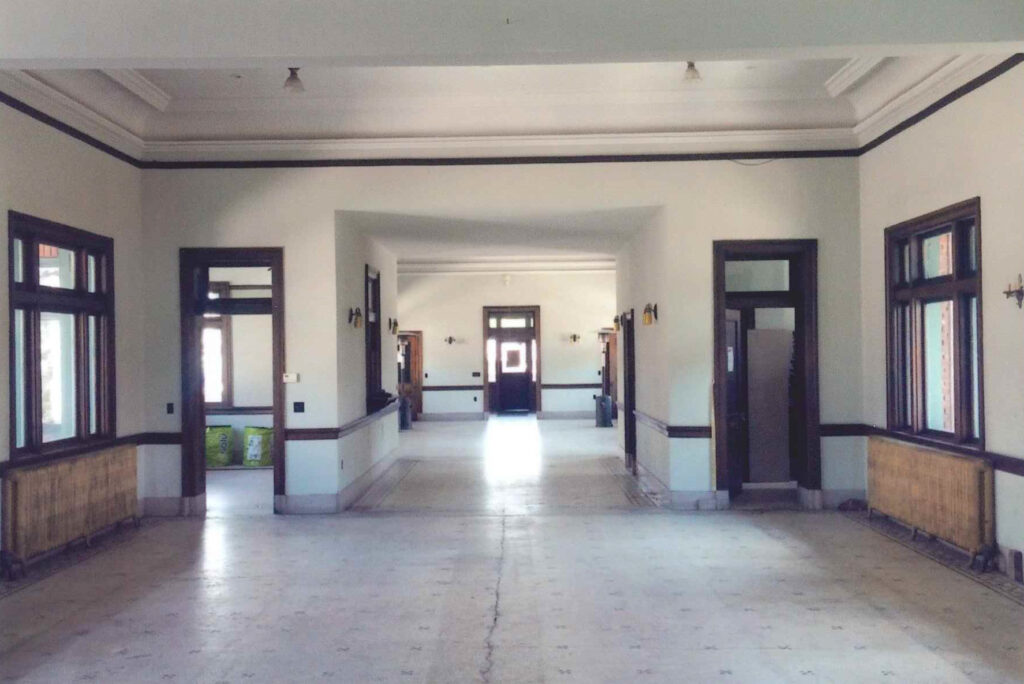
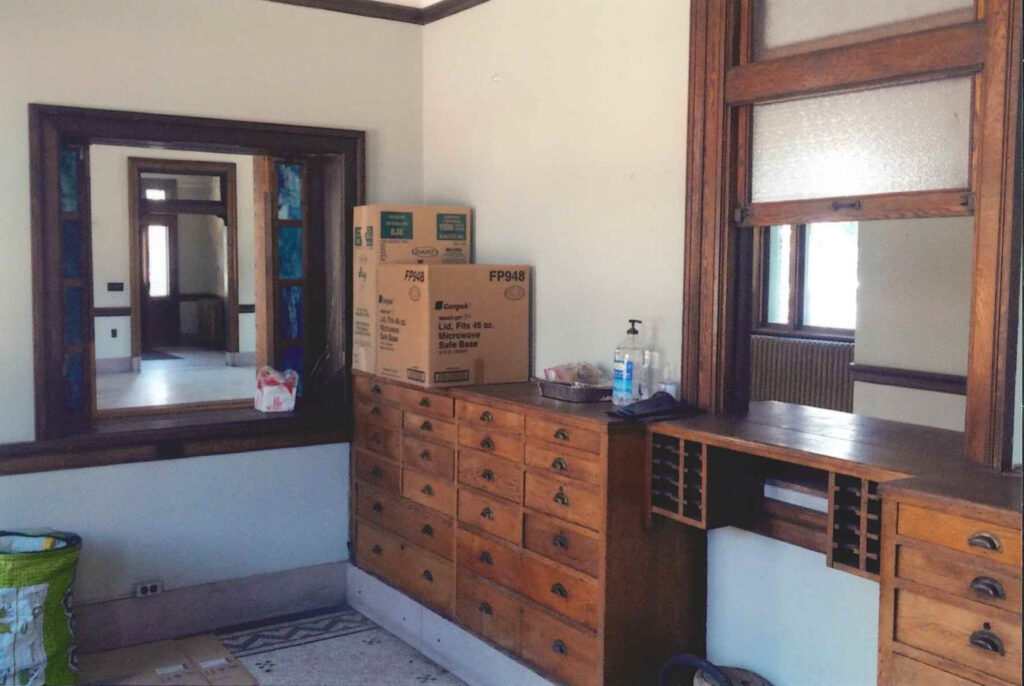
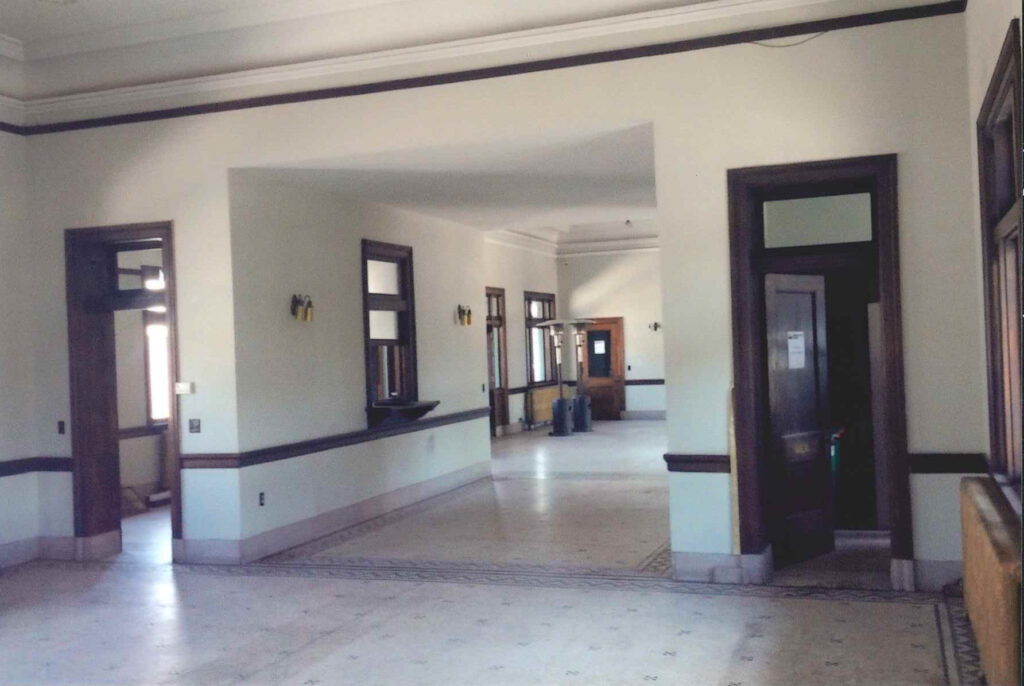
Leave a Reply